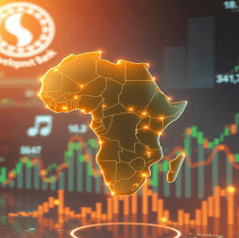By Isaac Kow ADU
Over the past decade, Africa’s public debt has nearly doubled, with a growing share becoming short-term and non-concessional. This means repayment obligations are falling due faster, escalating refinancing needs. However, access to liquidity remains costly and limited.
Unlike other regions, Africa lacks a dedicated financial stability mechanism for large-scale debt refinancing, leaving many nations reliant on Eurobond markets—often at unsustainable costs.
This reliance, coupled with an inadequate global financial system that fails to provide timely and sufficient debt relief, has made sovereign debt sustainability a growing concern across the continent.
Lessons from past sovereign defaults
In 2020, Zambia became the first African nation to default on its Eurobond obligations in the COVID-19 era, missing a $42.5mn coupon payment. This triggered credit downgrades and left the country in prolonged financial distress.
The government admitted it could not meet its external obligations and had to prioritize servicing debts to institutions with preferred creditor status, such as international financial institutions and regional development banks. As a result, arrears to private and official bilateral creditors kept accumulating. By 2022, Zambia was servicing only a fraction of its external debt, underspending by 83.4% in 2021 and 95.5% in 2022.
Similarly, Ghana faced severe fiscal pressures, leading to a debt restructuring program in 2023. After defaulting on its external debt in December 2022, Ghana managed to secure $2.8 billion in debt relief from official creditors under the G20 Common Framework. However, the restructuring process has been protracted, reflecting the inefficiencies of existing global financial mechanisms in addressing Africa’s debt sustainability challenges.
The African Financial Stability Mechanism (AFSM): A timely intervention
Recognizing these challenges, the African Development Bank (AfDB) is advancing plans to operationalize the African Financial Stability Mechanism (AFSM). This regional refinancing facility is designed to assist African nations with maturing Eurobond obligations by providing concessional loans.
The initiative is contingent on macroeconomic and fiscal policy reforms, ensuring that recipient countries adopt measures to enhance debt sustainability. If approved at the upcoming African Union Summit, the AFSM could mark a significant shift in Africa’s approach to managing sovereign debt.
What is in it for investors?
- For investors, the establishment of the AFSM could enhance confidence in African sovereign bonds by reducing the likelihood of defaults and improving market stability.
- A regional refinancing framework could lead to better risk pricing, potentially lowering yields on African debt and making investments more attractive.
- It would also introduce an additional layer of risk mitigation, reassuring global investors that African issuers have a structured support system in times of distress.
What is in it for issuers?
- For issuers, the AFSM presents an opportunity to access liquidity at lower costs, easing refinancing pressures and reducing reliance on expensive Eurobond markets. This could translate into improved fiscal space for governments, allowing them to allocate resources to critical development projects rather than debt servicing.
- Additionally, the requirement for fiscal policy reforms as a condition for concessional loans could drive more sustainable debt management practices across the continent.
Final thoughts: A game-changer for Africa’s debt landscape?
The introduction of the AFSM represents a long-overdue response to Africa’s debt sustainability challenges. If effectively implemented, it could reshape the continent’s sovereign debt market, providing much-needed stability and lowering refinancing risks.
As Africa moves toward a more structured approach to debt sustainability, the AFSM could serve as a critical tool in ensuring financial resilience.
The big questions:
Will it have the necessary scale to meet Africa’s refinancing needs?
Can it effectively coordinate with global financial institutions to enhance debt relief efforts?
Could it be the key to restoring investor confidence and fostering sustainable economic growth in Sub-Saharan Africa?
What is your view on this initiative?

Africa’s debt burden has surged, with refinancing becoming costlier and riskier. Past defaults, like Zambia’s and Ghana’s, highlight the need for a structured solution. The African Development Bank’s proposed African Financial Stability Mechanism (AFSM) aims to provide concessional refinancing, reducing default risks. If successful, it could enhance investor confidence, stabilize markets, and reshape Africa’s debt sustainability.










